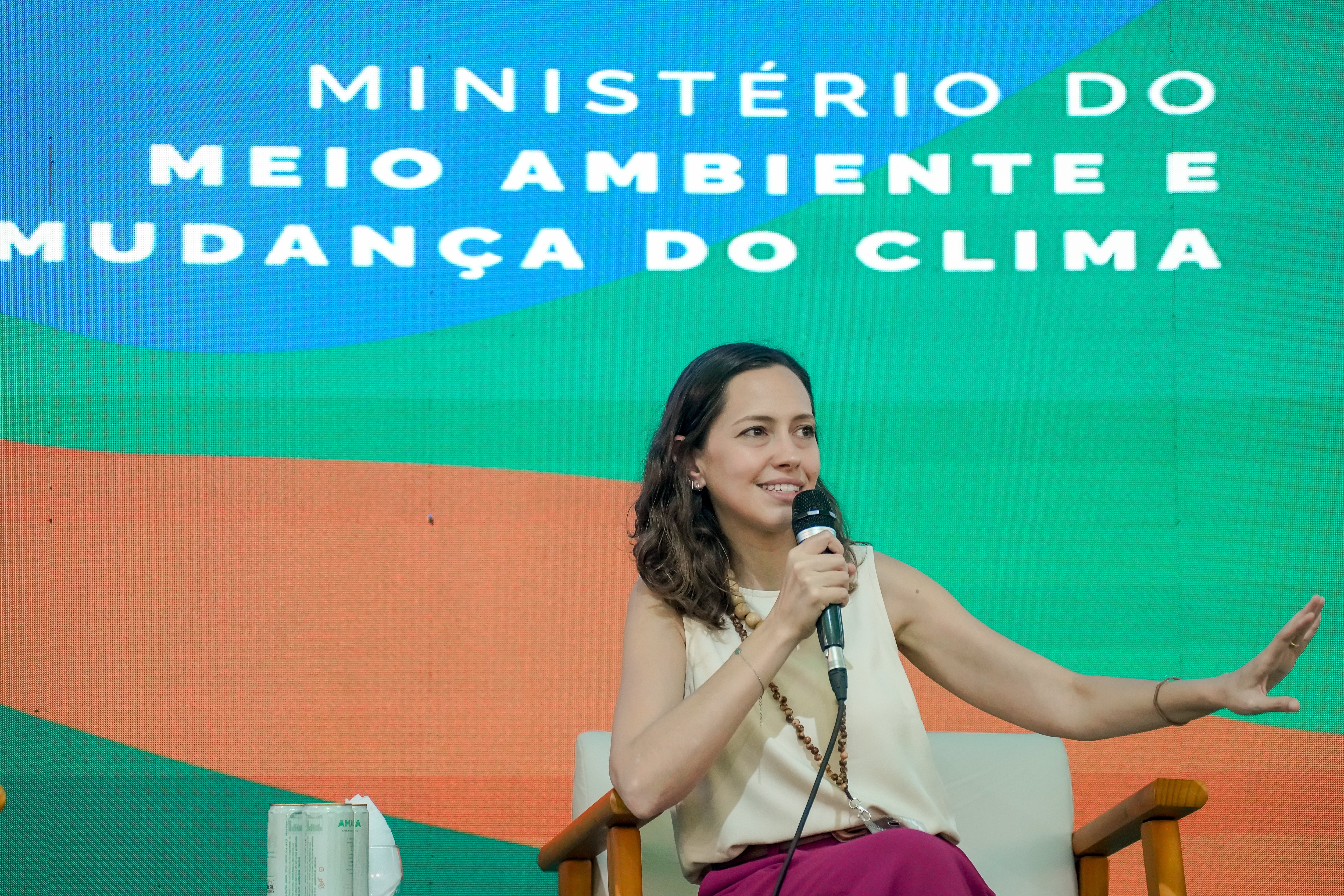Action Agenda stocktake highlights progress in coordinating voluntary climate actions to implement the Paris Agreement
Bruna Cerqueira, Director of the COP30 Action Agenda, celebrated the impacts and progress of the mobilization, which brings together 117 Solution Acceleration Plans

By Rafaela Ferreira/COP30
The COP30 Action Agenda stocktake held this Friday, 21 November, in the Green Zone aimed to recognize its impact and highlight the progress achieved. In total, there are 117 Solution Acceleration Plans. Bruna Cerqueira, Director of the COP30 Action Agenda, emphasized that this mobilization constitutes a global and multisectoral structure capable of amplifying the effect of efforts made in recent years.
The Action Agenda is the pillar of the Conference that mobilizes voluntary climate actions by civil society, companies, investors, cities, states, and countries in order to intensify emission reductions, climate adaptation, and the transition toward sustainable economies, in line with the Paris Agreement. Designed to coordinate and accelerate existing initiatives, the COP30 proposal consolidates a decade of mobilization that began at COP21.
The Director highlighted the Tropical Forests Forever Fund (TFFF), a global initiative that integrates public and private investments to advance conservation strategies and strengthen international partnerships for the protection of the most vulnerable tropical ecosystems. “The TFFF was a major voluntary agenda, not a negotiated agenda. We advanced in relation to carbon markets and biofuels, with a broad declaration on sustainable fuels. We also advanced in the demarcation of Indigenous lands,” Bruna recalled.
The Director also highlighted the Roadmap from Baku to Belém, a document that outlines the trajectory for the world to reach 1.3 trillion dollars in climate finance for developing countries by 2035. “The objective is to increase resources to reach that amount, but this depends on the engagement of the private sector.”
In recent months, the Presidencies of COP29 and COP30 and the High-Level Climate Champions engaged with 482 initiatives launched at previous conferences to demonstrate and accelerate implementation. In concrete terms, six times as many initiatives presented measurable results compared to the previous COP, evidence that implementation has accelerated and is already visible in households, farms, clinics, and cities around the world.
Solution pillars
The COP30 Action Agenda seeks to introduce a structure capable of mobilizing actors and efforts to accelerate implementation of what has already been negotiated, based on the outcomes of the first Global Stocktake (GST 1). The Presidency of the Conference proposes to translate these outcomes into six thematic pillars and thirty key objectives, driven by multiple solutions that span mitigation, adaptation, finance, technology, and capacity building.
According to the Director of the COP30 Action Agenda, the work carried out focused on accelerating solutions within these pillars. “We worked to identify which solutions are functioning in territories and can be accelerated, what the triggers are, and which levers are needed to accelerate these solutions.”
Bruna Cerqueira recalled the launch of the Belém Health Action Plan for adapting the health sector to climate change, the first international climate adaptation document dedicated to health. It is part of the COP30 Action Agenda and responds to Objective 16, which focuses on promoting resilient health systems in the face of the climate crisis.
Given the investment required to implement the Plan, the Climate and Health Funders Coalition announced an initial investment of 300 million dollars for the international commitment. “The Belém Health Action Plan was accompanied by the commitment from philanthropic organizations to contribute this investment in order to move it forward,” Bruna stated.
COP as a process
The Action Agenda was structured to enable what is negotiated and reinforce its complementarity with the formal process. Negotiators already recognize it as an implementation arm rather than a parallel track. “These plans offer a space to define, in concrete terms, what will be done, by whom, by when, and in what manner, as well as with which resources,” the Director concluded.
